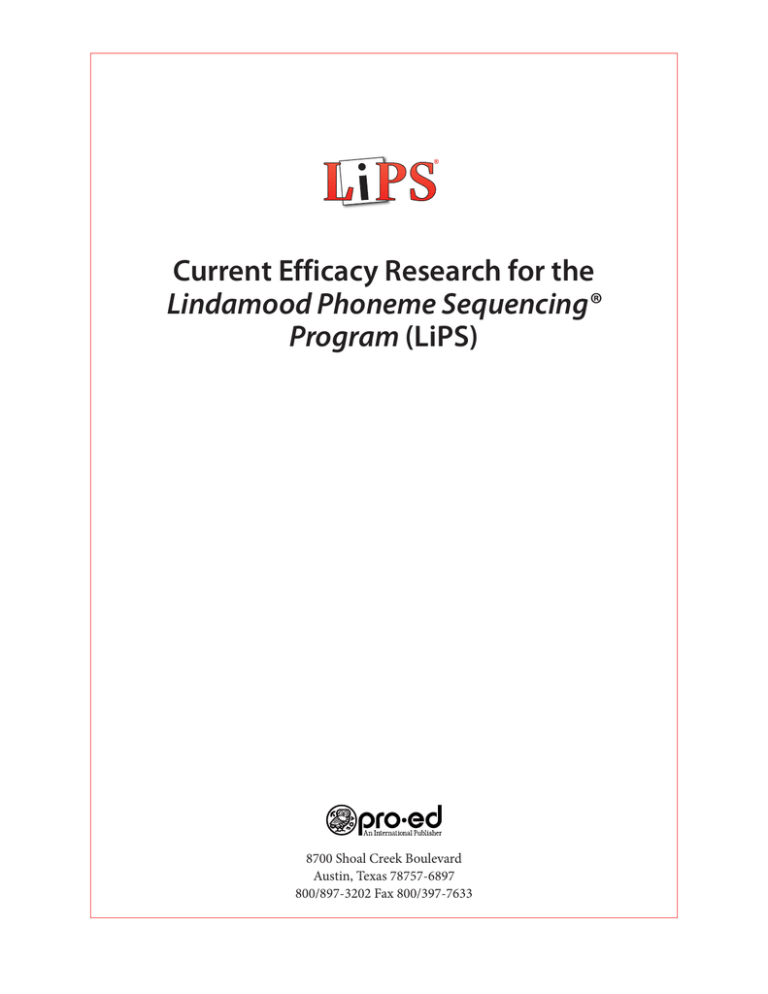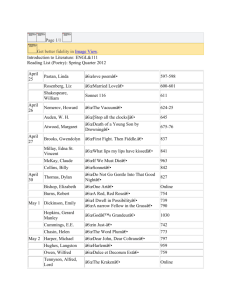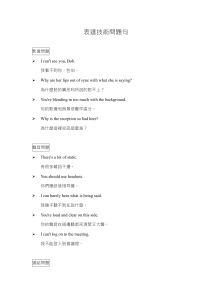
Current Efficacy Research for the
Lindamood Phoneme Sequencing®
Program (LiPS)
8700 Shoal Creek Boulevard
Austin, Texas 78757-6897
800/897-3202 Fax 800/397-7633
© 2011 PRO-ED, Inc.
8700 Shoal Creek Boulevard
Austin, Texas 78757-6897
800/897-3202 Fax 800/397-7633
Order number M13602
All rights reserved. The material protected by this copyright notice
may be reproduced for information sharing. Any commercial use is
prohibited without prior written permission from the publisher.
Introduction
The Lindamood Phoneme Sequencing Program (LiPS) for Reading, Spelling, and Speech (formerly known
as the Auditory Discrimination in Depth program) was developed more than 40 years ago by Patricia C.
and Charles H. Lindamood. The third edition was revised in 1998 by Patricia C. Lindamood and Phyllis D. Lindamood; the fourth edition was revised in 2011. The program has been used clinically and in
classrooms throughout North America, Australia, and other countries.
The LiPS Program is an intensive multisensory program for students in preschool through adulthood who need explicit, direct, and systematic instruction to develop the phonological awareness
abilities that will help them learn to read, write, and spell. Not intended as an approach for teaching
normally developing readers, the LiPS Program instead was especially designed for use with students
who are poor readers or who are considered at risk for reading difficulties.
Using an oral-motor, visual, and auditory feedback system, the LiPS Program develops the student’s ability to distinguish phonemes in spoken patterns. Students explore the physical movements
involved in producing sounds and learn to hear, see, and feel the physical characteristics of sounds and
to notice the contrasts between them. LiPS builds on existing knowledge to introduce new skills and
frequently spirals back to review until mastery is reached. Students learn to identify and verify sounds
independently; they later produce, hear, and eventually read those sounds.
Once students have been introduced to the consonant and vowel sounds, they learn to “track”
sounds within a speech stream. Tracking directly stimulates awareness of the identity, number, and
order of phonemes in a syllable. It develops segmentation and blending, as well as the ability to judge
addition, deletion, substitution, and shifting of phonemes. Students use colored magnetic squares to
represent phonemes. When an error is made, the manual guides teachers to provide corrective feedback using the Socratic method of questioning. The student is questioned, with attention drawn primarily to the articulatory-motor features (e.g., “What sound do you feel right after the Lip Popper
when you say /piv/?”).
In the LiPS Program, letters are introduced after the student has a firm understanding of phonology. In teaching sound–symbol associations, the LiPS tasks progress from articulatory movements to
sounds to letters. Students who can track phonemes successfully in spoken syllables are then led to
discover the connection between this process and decoding and spelling. This occurs in a sequenced
fashion that moves from the simple to the complex to the multisyllable level. Remedial work uses both
pseudowords (to minimize the effect of memorization) and real words. Overlap to contextual reading
occurs, and reading material is included in the form of the Phonological Awareness and Sequencing
(PAS) Stories, chosen to be on essentially the same level that the student can track. Spelling exceptions
and irregularities are introduced in a systematic fashion.
Research on the Use of the LiPS Program
In the National Reading Panel (NRP; 2000) report, the research studies incorporating the LiPS Program were cited as “well-designed, high-quality research that highlights the effectiveness of direct
instruction in phonological awareness and phonics” (pp. 2–36, 2–127). In this section, we will review
the research examining LiPS Program effects, and comparisons between LiPS and other methods of
teaching reading to students with reading difficulties.
1
Research Showing Program Effects
The implementation of the LiPS Program and its effects on students’ word-reading abilities have been
considered by numerous researchers. Several are highlighted in the following table and described
briefly below.
Researchers
Year
N
Students
Method
Results
McIntyre,
Protz, &
McQuarrie
2008
227
Typically achieving
and at risk for reading failure in Grade 1
LiPS Program in the
classroom
Gains in PA and
sound–letter correspondence
Truch
1994
281
5–55 years old
80 hr of intensive 1:1
LiPS Program
instruction
Highly significant
gains in PA, sound–
letter correspondence, word identification, spelling,
decoding in context
Alexander,
Anderson,
Heilman,
Voeller, &
Torgesen
1991
10
7 years 7 months–12
years 10 months
with severe reading
disabilities
LiPS Program in
1-hour sessions,
4 times a week
Significant increase
in PA, increase in
word attack skills
McIntyre, Protz, and McQuarrie (2008)
McIntyre, Protz, and McQuarrie (2008) investigated the effect of the LiPS Program on the phonological awareness (PA) skills of typically achieving students and students classified as at risk for reading
failure between kindergarten and Grade 1. Students demonstrated gains in phonological awareness
and sound–letter correspondence in classrooms where teachers used the LiPS Program. Results supported the construct of reading deficit prevention and suggested that the LiPS instruction method has
a positive impact on children’s phonemic awareness skills in kindergarten and Grade 1. This study
demonstrated that primary prevention of reading failure at the classroom level using the LiPS Program
appears to be cost-effective and efficient in meeting students’ needs.
Truch (1994)
Truch (1994) conducted a longitudinal study in which he investigated how phonological awareness was
affected by the LiPS instructional approach. Pretest and posttest data were collected on 281 participants, aged 5 to 55 years, who had received 80 hr of intensive one-on-one instruction following the
scope and sequence of the LiPS Program. Results indicated that a treatment effect existed for the group
of participants, and highly significant gains were observed on measures of phonological awareness,
sound–symbol connections, word identification, spelling, and decoding in context.
Alexander, Anderson, Heilman, Voeller, and Torgesen (1991)
Alexander, Anderson, Heilman, Voeller, and Torgesen (1991) studied a group of 10 students, ranging
in age from 7 years 7 months to 12 years 10 months, with severe reading disabilities, who were trained
in the LiPS Program in 1-hour sessions, four times a week, in a school setting and a clinic setting. All
of the children in the study significantly increased their phonological awareness skills. The children
also increased their word attack skills.
2
Comparison Studies
A number of research studies have compared the LiPS Program to other reading programs with various
programmatic emphases. Several are highlighted in the following table and described briefly on the
following pages.
Researchers
Year
N
Students
Compared
Results
Pokorni, Worthington, &
Jamison
2004
60
• 7–9 years
• Language and
reading deficits
LiPS; Earobics; and
Fast ForWord; three
1-hour sessions during 20-day summer
program
LiPS intervention did
significantly better
job in improving
students’ ability to
blend phonemes;
significant improvement in PA
Torgesen,
Wagner,
Rashotte,
Rose, Lindamood,
Conway, &
Garvan
1999
33
Kindergarten–
second grade
PA and synthetic
phonics (LiPS)
36
Kindergarten–
second grade
Embedded phonics
(EP)
37
Kindergarten–
second grade
Regular classroom
support
Students using PA
and synthetic phonics scored higher
than those using
EP in PA, phonemic
decoding, and
context-free word
reading
32
Kindergarten–
second grade
No treatment
Torgesen,
Alexander,
Wagner,
Rashotte,
Voeller, &
Conway
2001
26
24
Severe reading disabilities
LiPS and embedded
phonics; 1:1 for two
50-minute sessions/
5 x week for 8 weeks
LiPS resulted in significantly greater
growth
Torgesen,
Wagner,
Rashotte, &
Heron
2003
150
Low-achieving first
grade
LiPS; Read, Write, &
Type (RWT); and
regular instruction
LiPS and RWT were
effective at preventing reading problems; LiPS had positive effects on
alphabetics
McGuinness,
McGuinness,
& McGuinness
1996
42
First grade
3 classes: 1 LiPS with
modified whole language, 1 LiPS with
Montessori, and 1
modified whole language program
Significantly higher
word identification
and word attack
scores for students
receiving LiPS
Kennedy &
Backman
1993
10
Severe learning disabilities
Remedial program
with LiPS intensive,
and remedial program alone
Significantly greater
gains in PA and phonetic spelling strategies for students
receiving LiPS
Van der Laan
2006
32
At-risk first grade
District curriculum
with LiPS and district curriculum
without LiPS
LiPS + district curriculum intervention
showed significant
effect on PA
3
Pokorni et al. (2004)
Pokorni et al. (2004) conducted a comparison study of the LiPS, Earobics (Cognitive Concepts, Inc.,
1998), and Fast ForWord (Scientific Learning Corporation, 1999) programs. The purpose of the study
was to determine the effectiveness of three instructional methods that claim to improve phonological
awareness, language, and reading-related skills. Sixty students, age 7 to 9 years, with language and reading deficits were randomly assigned to one of the three interventions. Students received three 1-hour
daily intervention sessions during a 20-day summer program conducted by a large school district.
Study results showed that “the LiPS intervention did a significantly better job than the other two interventions to improve students’ ability to blend phonemes” (Pokorni et al., 2004, p. 155). Analyses within
each group noted significant gains in phonological awareness skills made by the students who received
LiPS instruction.
Torgesen et al. (1999)
Torgesen et al. (1999) conducted a study wherein students from 13 schools were provided instruction
from second semester kindergarten through Grade 2. Eligible students were included according to the
following criteria: lowest combined scores on a letter-naming task and a phoneme awareness task, and
an estimated Verbal Intelligence score above 75. An extensive battery of pretests was given to the students in the treatment groups. The groups were not significantly different from each other and matched
on age, estimated Verbal IQ, letter-name knowledge, phoneme elision, gender, and race. Students were
randomly assigned to one of four groups. The four groups were identified as the Phonological Awareness Plus Synthetic Phonics (PASP, n = 33) group, who participated in the LiPS intervention program;
the Embedded Phonics (EP, n = 36) group, who were provided less explicit phonics instruction than
the PASP group, along with more work on sight words and on reading and writing text; the Regular
Classroom Support (RCS, n = 37) group, which consisted of students participating in individual tutoring activities taught in their regular classroom reading groups; and the No Treatment control group
(NTC, n = 32). The groups were not significantly different from each other and were matched on age,
estimated Verbal IQ, letter-name knowledge, phoneme elision, sex, and race. Intervention training was
provided in 20-min sessions, four times a week, individually for 2½ years. Two of the four weekly sessions were led by certified teachers, and two were led by paraprofessionals who followed the teachers’
written directions. Results indicated that students in the PASP group scored significantly higher than
the EP group in phonological awareness, phonemic decoding, and untimed, context-free word reading.
No significant differences were noted between the PASP and EP groups in passage comprehension,
although the PASP group obtained slightly higher scores.
Torgesen et al. (2001)
In a follow-up study, Torgesen et al. (2001) compared the LiPS Program (n = 26) with the Embedded
Phonics program (EP; n = 24) in a remedial intervention for students with severe reading disabilities.
Students were randomly assigned to the two treatment groups. They were matched on age (8–10 years
old), Full Scale IQ, Verbal IQ, word attack, word identification, the Lindamood Auditory Conceptualization Test (LAC; Lindamood & Lindamood, 2004), sex, and race. Treatment for both groups was provided on a 1:1 basis for two 50-min sessions, 5 days a week for 8 weeks. Overall, each group received
67.5 hr of instruction. Teachers who provided the instruction in both groups had experience using a
direct, synthetic phonics approach to teach children with reading disabilities. In this study, more
explicit and systematic phonics instruction was provided to the students in the EP group than in the
prevention study described earlier. However, students in the EP group spent considerably more instruc4
tion time (50%) reading text under the guidance of a tutor than did students in the LiPS group (5%).
Results indicated that students in both groups made dramatic improvements in their phonemic decoding ability, text reading accuracy, and reading comprehension. Students in the LiPS group demonstrated significantly greater growth in word attack on the Woodcock Reading Mastery Test–Revised
(WRMT-R; Woodcock, 1987) at immediate posttest, but these differences were not maintained at the
1- and 2-year follow-up periods. In general, students in both groups maintained, or slightly improved,
their reading gains during the 2-year follow-up period.
Torgesen et al. (2003)
Torgesen et al. (2003) used a computerized program to provide the comparison group for a study of
150 low-achieving first-grade students in five elementary schools. At two schools, students were randomly assigned to the LiPS Program or to Read, Write, and Type (RWT), a reading software program.
At three additional schools, students were randomly assigned to LiPS, RWT, or a regular instruction
control group. Based on comparisons between the experimental and control groups from three of the
schools, the study suggests that both the LiPS and RWT curricula are effective ways to provide instruction to prevent reading problems in at-risk first-grade children. LiPS was found to have potentially
positive effects on alphabetics. Overall, the LiPS curriculum seemed slightly stronger, although the
differences between the two curricula were not large. Given the complexity of training teachers to
deliver the LiPS Program versus the RWT curriculum, and the strength of the reading instruction
provided by regular classroom teachers in two of these three schools, this study is likely to provide a
conservative estimate of the effectiveness of these interventions.
McGuinness et al. (1996)
McGuinness et al. (1996) adapted the LiPS Program for use in a first-grade classroom setting. The
study involved two experimental classes of 15 first-grade students each, and one control group of 12
first-grade students. The teachers integrated the LiPS Program into their regular instruction. One
teacher used a modified whole-language approach along with the LiPS Program, a second teacher
integrated LiPS into her regular Montessori instructional program, and the control teacher used a
modified whole-language program that built on prior phonics instruction. At the end of the school
year, students instructed with LiPS had significantly higher scores on measures of word identification
and word attack.
Kennedy and Backman (1993)
Kennedy and Backman (1993) studied 10 students with severe learning disabilities who received the
LiPS Program on an intensive basis in addition to a comprehensive remedial program. The students
were matched with 10 students with severe learning disabilities who received the comprehensive remedial reading program but not the LiPS Program component. Significantly greater gains in phonological
awareness and phonetic spelling strategies were noted for the students enrolled in the LiPS Program
when beginning- and end-of-year scores were compared.
Van der Laan (2006)
Van der Laan (2006) studied at-risk first-grade students in Michigan and investigated the impact of the
LiPS Program on their phonological awareness, reading fluency, and comprehension. The study
included 16 students in each of the experimental and control groups. The data indicated that there were
statistically significant relationships between the LiPS Program and phonological awareness. Students
5
in the experimental group also made significant gains in reading fluency and comprehension. The LiPS
Program provides systematic instruction that targets phonological awareness using deliberate teaching
methods.
Summary
Here is what researchers in the field of reading have said about the LiPS Program:
• “The LiPS Program aligns with current reading research in its explicit and systematic presentation of phonological awareness and phonics instruction.” — The National Reading
Panel, 2000
• “The instructional content and design of LiPS and the research base supporting its efficacy
are strong.”— Florida Center for Reading Research, 2006
• “The LiPS program involves explicit instruction in phonemic awareness, phonemic decoding, and sight word recognition skills. It also includes mastery-oriented progressions
through essential skills, extensively scaffolded error-correction routines to establish appropriate word identification strategies, and many opportunities to practice with appropriate
materials.”— Torgesen et al., 2001
• “The LiPS intervention did a significantly better job to improve students’ phonemic awareness skills and their ability to blend phonemes.”— Pokorni et al., 2004
• “Student achievement scores in the areas of phonemic awareness and letter/sound correspondence for all students, and particularly those students considered at risk for reading
failure, when teachers employed the LiPS program, made significant gains. The LiPS
program is an effective program that has proven to impact beginning reading
acquisition.”—McIntyre et al., 2008
• “The LiPS treatment group had significantly stronger skills in phonological awareness;
phonemic decoding; and untimed, context-free word reading.…Children were also stronger on word level reading skills.”— Torgesen et al., 1999
• “The LiPS Program intervention showed significant impact on phonemic awareness, fluency, and comprehension.”— van der Laan, 2006
For more than 40 years the LiPS Program has successfully addressed the reading difficulties of a
wide range of individuals, including students with functional speech–language delay, second language
learning, dyslexia, autism, apraxia, pervasive developmental delay, traumatic brain injury, and stroke.
Research shows marked reductions in the incidence of reading failure when systematic and explicit
instruction is provided.
The LiPS Program aligns with this research in its explicit and systematic presentation of phonological awareness and phonics instruction. The LiPS Program is an oral-motor, visual, and auditory
feedback system that enables students of all ages to understand the identity, number, and order of phonemes in syllables and words. The LiPS Program focuses directly on the development of phonemic
awareness and its integration with sound–symbol knowledge, which accelerates the student’s grasp of
English orthographic principles for reading and spelling. The LiPS Program has been proven to positively affect beginning reading acquisition among students in early intervention, at-risk, remedial, and
reading disability programs. The instructional content and design of the LiPS Program and the research
base supporting its efficacy are strong.
6
References
Alexander, A., Anderson, H., Heilman, P., Voeller, K., & Torgesen, J. (1991). Phonological awareness training and
the remediation of analytic decoding deficits in a group of severe dyslexics. Annals of Dyslexia, 41, 193–206.
Cognitive Concepts, Inc. (1998). Earobics auditory development and phonics program step 2. Evanson, IL:
Author.
Florida Center for Reading Research. (2006). Lindamood phoneme sequencing program for reading, spelling, and
speech. Tallahassee, FL: Author.
Kennedy, K. M., & Backman, J. (1993). Effectiveness of the Lindamood Auditory Discrimination in Depth program with students with learning disabilities. Learning Disabilities Research & Practice, 8, 253–259.
Lindamood, P., & Lindamood, P. C. (2004). The Lindamood auditory conceptualization test (3rd ed). Austin, TX:
PRO-ED.
McGuinness, C., McGuinness, D., & McGuinness, G. (1996). Phono-Graphix: A new method for remediating
reading difficulties. Annals of Dyslexia, 46, 73–96.
McIntyre, L., Protz, S., & McQuarrie, L. (2008). Exploring the potential of LiPS instruction for beginning readers.
Developmental Disabilities Bulletin, 36(1&2), 18–48.
National Reading Panel. (2000). Teaching children to read: An evidence-based assessment of the scientific research
literature on reading and its implications for reading instruction (NIH Publication No. 00-4769). Washington,
DC: U.S. Government Printing Office.
Pokorni, J. L., Worthington, C. K., & Jamison, P. J. (2004). Phonological awareness intervention: Comparison of
Fast ForWord, Earobics, and LiPS. The Journal of Educational Research, 97, 147–158.
Scientific Learning Corporation. (1999). Fast ForWord companion: A comprehensive guide to the training exercises. Berkely, CA: Author.
Torgesen, J. K., Alexander, A. W., Wagner, R. K., Rashotte, C. A., Voeller, K. K. S., & Conway, T. (2001). Intensive
remedial instruction for children with severe reading disabilities: Immediate and long-term outcomes from
two instructional approaches. Journal of Learning Disabilities, 34, 33–58, 78.
Torgesen, J. K., Wagner, R. K., Rashotte, C. A., & Heron, J. (2003). Summary of outcomes from first grade study
with Read, Write and Type and Auditory Discrimination in Depth instruction and software with at-risk children (FCRR Tech. Rep. No. 2). Retrieved from http://www.fcrr.org/Technical Reports/RWTfullrept.pdf.
Torgesen, J. K., Wagner, R. K., Rashotte, C. A., Rose, E., Lindamood, P., Conway, T., & Garvan, C. (1999). Preventing reading failure in young children with phonological processing disabilities: Group and individual
responses to intervention. Journal of Educational Psychology, 91, 579–593.
Truch, S. (1994). Stimulating basic reading processes using Auditory Discrimination in Depth. Annals of Dyslexia, 44, 60–80.
Van der Laan, A. R. (2006). The effects of the Lindamood Phoneme Sequencing Program on reading fluency and
comprehension of at-risk first-graders. Unpublished doctoral dissertation, Eastern Michigan University, Ypsilanti, MI.
Woodcock, R. W. (1987). Woodcock reading mastery tests–Revised. Circle Pines, MN: American Guidance Service.
7
8700 Shoal Creek Boulevard
Austin, Texas 78757-6897
800/897-3202 Fax 800/397-7633
www.proedinc.com
Order number M13602






